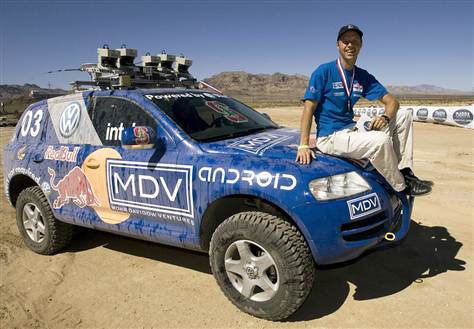Seeing Google cars navigating our streets and highways, with their arrays of spinning sensors and antennas bristling from their roofs gives us the impression that the technology involved is complex and expensive. Until recently, they were, with Wired reporting that early Google cars had multiple $80,000 LIDAR systems, and entrants in DARPA (Defense Advanced Research Projects Agency) challenges often sported over a quarter-million in esoteric devices that could, on occasion, spot the Holy Spirit in the vicinity. (Your editor made that last part up.) Mike Ramsey, writing for the Wall Street Journal suggests those prices may be going down – way down. “A Silicon Valley startup says it has solved several of the issues that might plague the introduction of autonomous vehicles — primarily the cost of the equipment. “Quanergy Systems Inc., of Sunnyvale, Calif., says it will offer a light detection and ranging sensor — or LIDAR — next year that costs only $250 and is the size of …
Audi Drives Hockenheim with “Bobby”
“Bobby” is Audi’s computerized “driver” for their RS 7, which they demonstrated before thousands of spectators in the grandstands at the 4.574 kilometer (2.842 mile) Hockenheim race track in Baden-Wurttemberg, Germany on October 19. The video, despite the somewhat sometimes annoying narration, gives a good impression of the run, showing the acceleration, braking and cornering through all 17 turns from both inside and outside the car. The inside views belie the speed the car attains, looking a bit unearthly by the precise, smooth lines the car takes, the envy of any “real” race car driver. Green Car Congress reports, “The Audi RS 7 piloted driving concept car drove a clean racing line at the Hockenheimring—full throttle on the straights, full braking before the corners, precise turn-in and perfectly metered acceleration when exiting the corners. Forces of over 1.3 g occur during braking, and lateral acceleration in the corners can reach 1.1 g. Tests on the track in Hockenheim suggested an …

